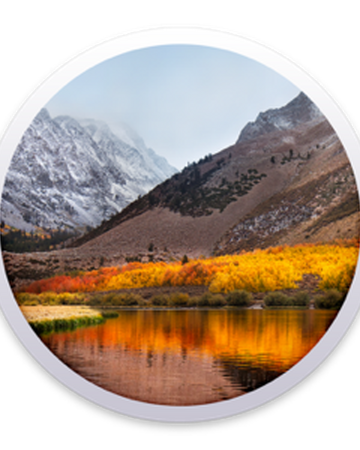To install on your machine, you can download and run @dosdude1 's macOS Mojave Patcher application, which will let you download a copy of the latest installer app from Apple and create a bootable. Pyrene fire extinguisher serial number.
- Macos High Sierra Patcher Tool For Unsupported Macs 2 MacOS High Sierra (version 10.13) is the fourteenth major release of macOS, Apple Inc.' S desktop operating system for Macintosh computers. MacOS High Sierra was announced at the WWDC 2017 on June 5, 2017 and was released on September 25, 2017. MacOS Sierra Patcher Tool for Unsupported Macs.
- Installing MacOS High Sierra 10.13 on Macs Not Supported is the purpose of the guide described on this page, follow step-by-step instructions.https://www.app.
 Important Notes:
Important Notes:- Using APFS is REQUIRED in Mojave in order to receive system updates via the normal Software Update method. If you choose to continue using macOS Extended (Journaled) as your filesystem type, you will NOT receive System Updates via System Preferences. If you are not using APFS, you can follow the 10.14.1 installation steps below.
- After applying ANY system update via Software Update, re-applying post-install patches using your Mojave Patcher installer volume will most likely be necessary. If you install a software update and the system fails to boot afterwards, this is what needs to be done.
10.14.6
10.14.6 can be updated normally via Software Update if using an APFS volume, and will need to be patched using an installer volume created with Mojave Patcher version 1.3.2 or later after installing.
10.14.5
10.14.5 can be updated normally via Software Update if using an APFS volume, and will need to be patched using an installer volume created with Mojave Patcher version 1.3.1 or later after installing.
10.14.4
10.14.4 adds new changes that ARE NOT patchable by the post-install tool of Mojave Patcher v1.2.3 and older! Before updating to 10.14.4, you you will need to use the latest Mojave Patcher version to create a new installer volume, using the 10.14.4 installer app. Then, update to 10.14.4, either by installing via Software Update, or by just using the installer volume you've created to install.
10.14.3
If you are currently running 10.14.1 or 10.14.2, you can simply use the Software Update pane of System Preferences (if using APFS) to apply the 10.14.3 update. Once the update is installed, you will most likely need to re-apply post-install patches to get the system to boot again. This process is detailed in steps 8 - 10 above. If you are currently running 10.14.0, you'll need to proceed with the 10.14.1 update method described below.
10.14.2

If you are currently running 10.14.1, you can simply use the Software Update pane of System Preferences (if using APFS) to apply the 10.14.2 update. Once the update is installed, you will most likely need to re-apply post-install patches to get the system to boot again. This process is detailed in steps 8 - 10 above. If you are currently running 10.14.0, or are using a non-AFPS volume, you'll need to proceed with the 10.14.1 update method described below.
10.14.1/macOS Extended (Journaled) volumes

The Mojave 10.14.1 update does NOT install properly on unsupported machines, and could result in an unbootable OS. If you want to install the 10.14.1 update (and are not currently running 10.14.1), perform the following steps:
• Download the latest version of Mojave Patcher
• Download the installer using the Tools menu of Mojave Patcher
• Create a patched USB installer
• Boot from that, and install 10.14.1 onto the volume containing an older release.
• Once done, apply the post-install patches, and you should now be on 10.14.1.

Macos High Sierra Patcher Tool For Unsupported Macs
This patch maker for macOS High Sierra does NOT work on my Mac mini 2007, A1176, Core 2 Duo 1.83GHz, 4GB Ram. I did follow the instructions, I made the USB, then I restarted my Mac mini and I did hold the “Option” in order to boot with USB but when I click on the USB icon to boot, the system goes back to normal boot “Mac OS X Lion”. Is anyone running OS Sierra on an unsupported Mac? I have a mid 2009 13' MacBook Pro that is running El Capitan. I upgraded the HD to an SSD several years ago.
Mac Os El Capitan Patcher Tool For Unsupported Macsales
Macos High Sierra Patcher Tool For Unsupported Macs Version
This year's macOS Mojave beta, and subsequent update, won't run and can't be installed on any Mac older than about 2012 —or so Apple thinks. However, if you're the sort to believe that every year Apple tries to force everyone to buy new Macs, and you also forget that 2012 was six years ago, you're in luck. But, there is now a way to ignore Apple and install macOS Mojave on any Mac you like. Or at least any Mac you like back to around 2008. There are exceptions. The new and most utterly not Apple supported macOS Mojave Patcher Tool will even go back to 2007 if you have a very specific iMac that you've already upgraded in a very specific way.
Macos High Sierra Patcher Tool For Unsupported Macs Files
Open the Finder, go to the Menu Bar, open the “Go” menu, select the entry:|Go to Folder. Right click on those items and click Move to Trash to delete them. Bitdefender for mac free download. Those preference files of Bitdefender Adware Removal Tool can be found in the Preferences folder within your user’s library folder (~/Library/Preferences) or the system-wide Library located at the root of the system volume (/Library/Preferences/), while the support files are located in '~/Library/Application Support/' or '/Library/Application Support/'. And then enter the path of the Application Support folder:~/Library Search for any files or folders with the program’s name or developer’s name in the ~/Library/Preferences/, ~/Library/Application Support/ and ~/Library/Caches/ folders.